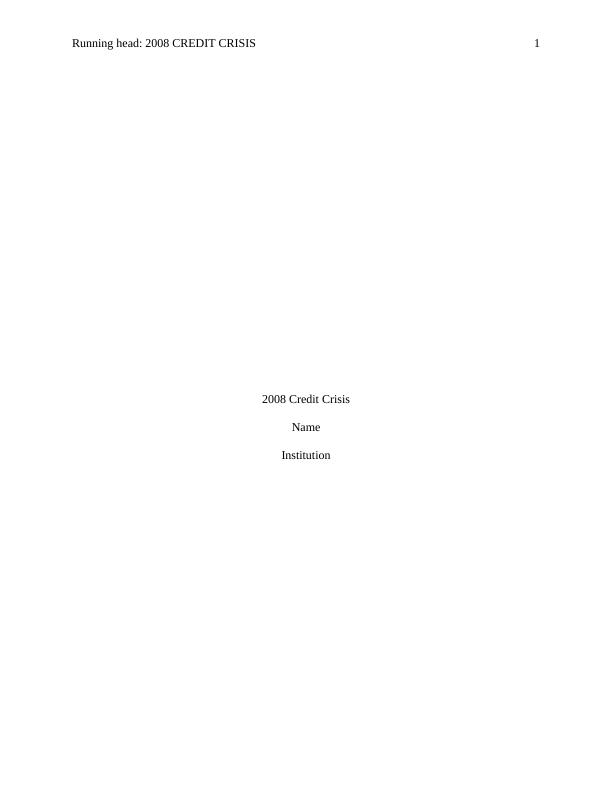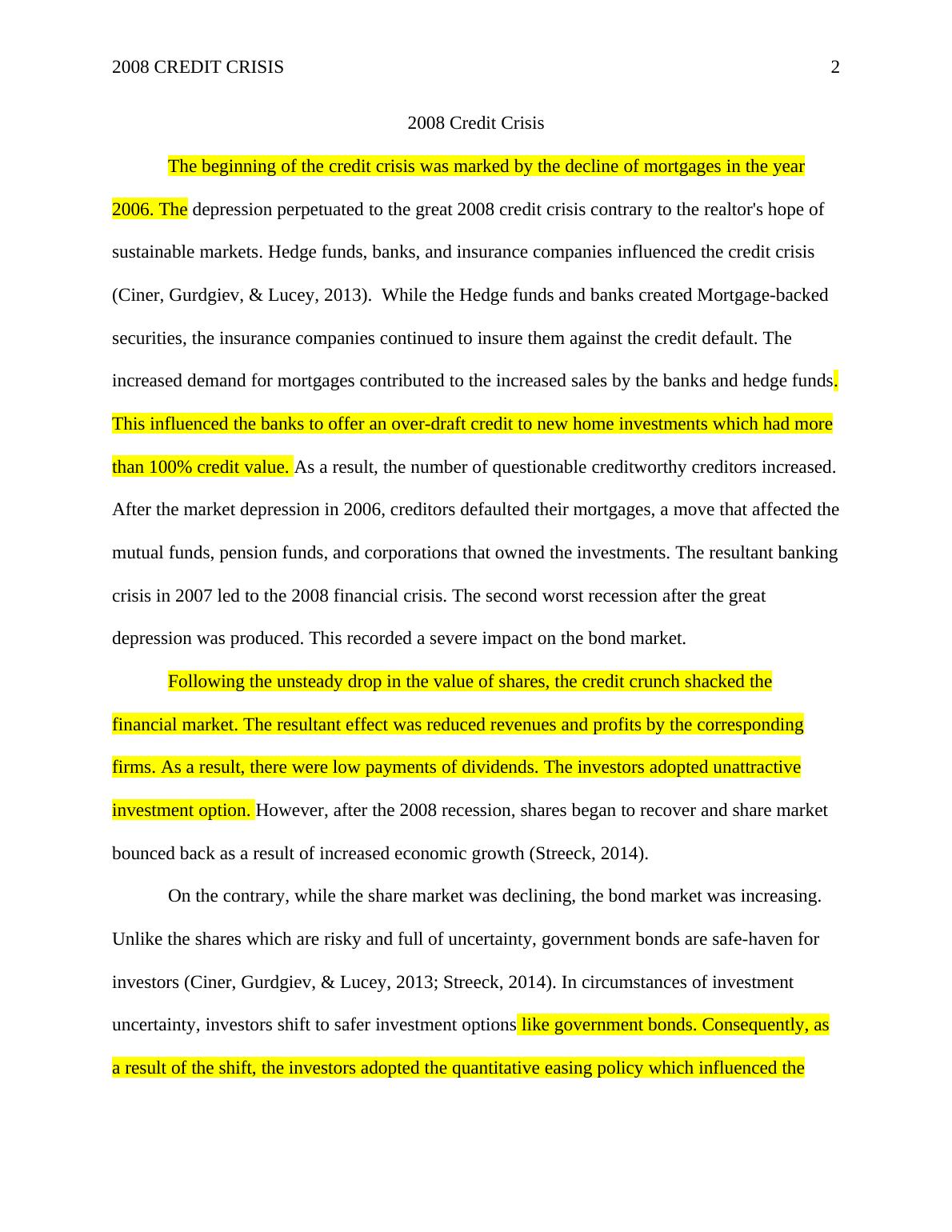2008 Credit Crisis
4 Pages833 Words368 Views
Added on 2022-11-28
About This Document
The beginning of the credit crisis was marked by the decline of mortgages in the year 2006. Hedge funds, banks, and insurance companies influenced the credit crisis. This article discusses the causes and effects of the 2008 credit crisis.
2008 Credit Crisis
Added on 2022-11-28
ShareRelated Documents
End of preview
Want to access all the pages? Upload your documents or become a member.
Financial and Credit Crisis
|4
|686
|111
The Main Causes of the Great Recession in the USA Paper
|11
|2801
|33
Factors That Led Up To the Global Banking Crisis 2007/09
|4
|724
|62
Advance Issues In Accounting
|8
|1974
|76
Impact of Credit Crisis on Financial Market: Assignment
|14
|4020
|449
Global Financial Crisis of 2008: Impact on International Financial Institutions
|7
|2179
|104


